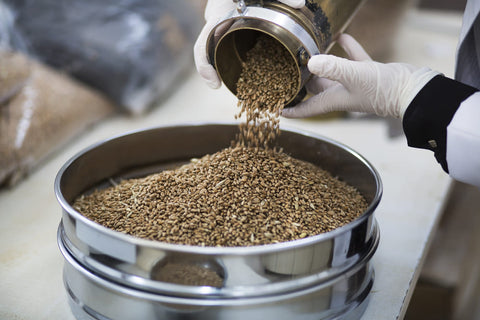A grain dryer plays an important role in many agricultural operations. Drying grain is an essential step in the harvesting and storage process. It enables farmers to harvest and store grain at higher moisture levels for longer periods—without worrying about the grain getting damaged or going bad before distribution. Understanding how a grain dryer works and how to power it is also important for farming operations and helps prevent unwanted slowdowns and expenses.
Keep reading to learn more about what a grain dryer is, how it works, and why a phase converter is the preferred power source for it.
|
Table Of Contents |
What Is A Grain Dryer?
Grain drying is used in the agricultural industry to remove excess moisture from grain kernels to preserve the product and maximize its shelf life. This form of crop protection helps farmers delay fermentation and other processes caused by excess moisture that can ruin crops. It also prepares the grain for further processing. A grain dryer is a key piece of farming equipment for the agriculture industry.
Grain dryers typically contain the following components:
- A heat generator: This component contains an aeration system that generates hot air flow.
- A desiccant body: This component holds the grain for drying and is where excess water evaporates.
- A control panel: This component contains the control, regulation, and safety devices for the whole drying system.
- Complementary equipment: This includes any tools designed to accumulate, clean, weigh, or handle the grain.

Types Of Grain Dryers
There are two types of grain dryers: discontinuous and continuous. Let’s look at how these grain dryers function and what applications they’re best suited for.
Discontinuous Dryers
These models dry grain in batches. One grain batch fills the machine to be dried, emptied, and replaced with a new batch. Discontinuous dryers are ideal for users who:
- Have a few tons of product
- Dry product for third parties
- Handle drying their own crop to reduce costs
- Dry more than one type of cereal
Continuous Dryers
These models dry grain continuously. While one batch of grain is still being dried at one end of the machine, a new wet batch enters the other end of the machine. Continuous dryers are ideal for:
- Large drying plants that dry 240 or more tons of grain per day
- Farms that need to dry large amounts of grain daily
- Those who dry large quantities of one grain type
- Those who have grain transportation and storage facilities readily available

How A Grain Dryer Works
The Drying Process
Here’s a breakdown of the grain drying process:
- The moisture inside the kernel is extracted and moved to the outer wall.
- The air surrounding the kernel evaporates the water.
- The humid air is expelled from the kernel entirely.
Air Heating & Cooling
Direct heating systems combine gases with the surrounding air to dry wet grain. If you need a high-performance heating system, this one is ideal because any heat generated is used for drying.
With indirect heating systems, the surrounding air travels through the combustion chamber and the pipes separating the combustion fumes from the air used to dry the grain. The combustion fumes exit the grain dryer and enter the atmosphere.
The last phase of the drying process is cooling, a fundamental phase for proper product storage. Depending on the type of dryer, the methods in which the grain is cooled also change.
Once the air has been heated, it must be cooled. The type of grain dryer used determines when and how cooling occurs. The grain cooling process for discontinuous dryers occurs once drying is complete while it occurs in a dedicated area to prevent the mixing of wet and dry materials for continuous dryers.

How To Power A Grain Dryer Efficiently
Grain dryers require large amounts of reliable three-phase power to function at full capacity. Three-phase power consists of an AC power circuit with three wires that are 120 electrical degrees apart. Commercial and industrial facilities typically use three-phase power because it can handle larger loads without causing disruptions. Three-phase power is also more efficient than single-phase power because it transmits three times the amount of power with only one extra wire.
Unfortunately, three-phase power is often inaccessible—not to mention expensive—in rural areas. That’s where a phase converter comes in. Phase converters transform single-phase utility power into three-phase power that’s strong enough to operate grain dryers and other farming equipment. Plus, you don’t have to spend money on a separate three-phase motor.
Those who work in the farming industry prefer phase converters because they:
- Are compatible with various grain handling and drying equipment
- Reduce energy costs
- Reduce downtime and maximize productivity
- Protect the environment by eliminating the need for fuel handling and storage equipment
Minimize Slowdowns and Maximize Profits With Phoenix Phase Converters
When it comes to powering your farming equipment, don’t settle for less than the best. From balers and conveyor belts to submersible pumps and center pivot irrigation systems, your machinery needs a reliable and efficient source of power.
Contact Phoenix Phase Converters to discuss your power needs and find a rotary phase converter that’s right for you. Our customizable phase converters are made with durable materials, including cast iron sealed vents that keep debris out of the motor. Plus, they’re compatible with various load types.
Get in touch with a voltage balance specialist today to get started, and enjoy free shipping on all orders.
